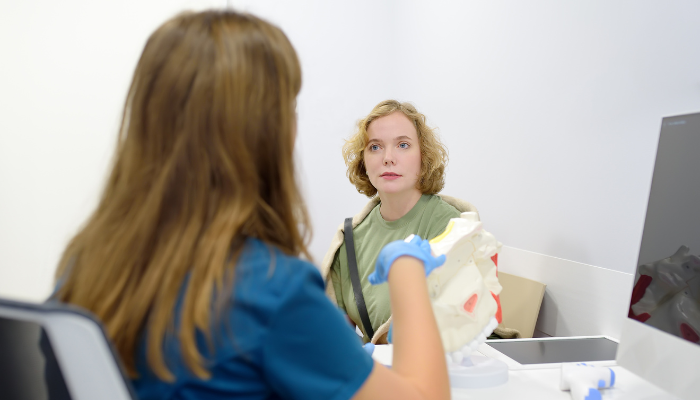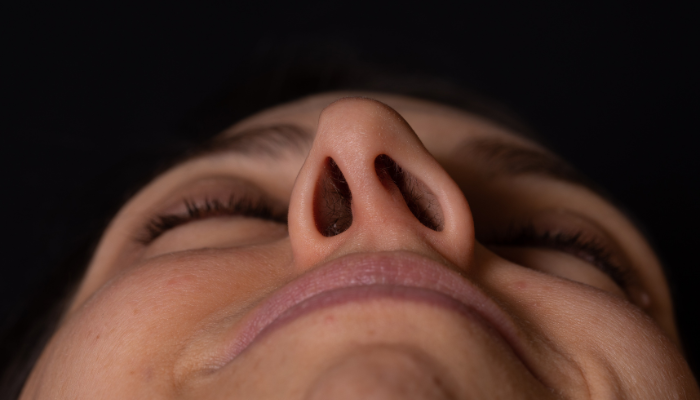You know, sometimes breathing just isn’t as easy as it should be. Maybe you’ve got a stuffy nose all the time, or you snore like a freight train. Well, a lot of the time, that’s down to something called a deviated septum.
It’s pretty common and if you’ve been wondering if a nose job, or rhinoplasty, can sort that out, you’re in the right place. Can Rhinoplasty Correct a Deviated Septum? We’re going to talk all about how this surgery might be the answer for both your breathing and how your nose looks.
Key Takeaways
- A deviated septum can really mess with your breathing and general comfort.
- Rhinoplasty can fix a deviated septum, often improving both how your nose works and how it looks.
- The process involves talking to a surgeon, planning the operation, and then the actual surgery.
- Recovery means dealing with some swelling and discomfort, but following aftercare instructions helps a lot.
- Choosing a good surgeon is super important for getting the best results and making sure everything goes well.
Understanding Deviated Septum

What Is a Deviated Septum?
A deviated septum is basically when the wall inside your nose that separates the two nostrils – the septum – is significantly off-centre or crooked. Most people actually have some degree of deviation, but it’s when it’s severe enough to cause problems that it becomes a real issue.
Common Symptoms and Impact on Breathing
So how do you know if you’ve got a deviated septum? The most common symptom is difficulty breathing through one or both nostrils. It’s like having a constant stuffy nose, even when you’re not ill. Other symptoms can include:
- Frequent nosebleeds
- Recurring sinus infections
- Facial pain
- Loud snoring (which can annoy your partner, trust me!)
Living with a severely deviated septum can be a real pain. It’s not just about the physical discomfort; it can also affect your sleep, your ability to exercise, and even your sense of smell. It’s definitely worth getting checked out if you suspect you have one.
When to Consider Correction
When should you actually think about getting it fixed? If your deviated septum is significantly impacting your quality of life, then it’s time to consider correction. This usually means if you’re experiencing:
- Chronic nasal congestion that doesn’t respond to medication.
- Frequent sinus infections.
- Significant difficulty breathing, especially during exercise or sleep.
It’s always best to chat with a doctor who can properly assess your situation and discuss the best course of action. They might suggest trying nasal sprays or other medications first, but if those don’t work, surgery might be the way to go.
Septoplasty and Rhinoplasty
Did you know that nasal surgery can do more than just reshape your nose?
When a deviated septum is part of the problem, a procedure called septoplasty—often performed alongside rhinoplasty—can improve both function and appearance.
What’s the Difference?
- Septoplasty is a functional surgery that corrects a deviated septum to improve airflow and breathing.
- Rhinoplasty is typically cosmetic, reshaping the external nose for aesthetic balance.
Together, they’re often referred to as septorhinoplasty, combining medical and cosmetic goals in one procedure.
How Septoplasty Works
During septoplasty, the surgeon:
- Accesses the nasal cavity
- Straightens and repositions the septum (the wall between your nostrils)
- Removes or reshapes cartilage and bone to open up your airways
Think of it like fixing a bent wall—it’s all about realignment for better structure and function.
Why Combine It With Rhinoplasty?
You don’t have to choose between looking better and breathing better. Septorhinoplasty offers both:
- Improved airflow and reduced nasal blockages
- Enhanced nose shape and facial harmony
It’s especially ideal if you’ve always considered rhinoplasty for cosmetic reasons and struggle with breathing issues.
The Surgical Process Explained

The first step is always a chat with your surgeon. It’s more than just a quick hello; it’s a proper sit-down where they’ll have a good look at your nose, inside and out. They’ll ask about your medical history, any allergies, and what you’re hoping to achieve with the surgery.
Honest communication is key here. They might even take some photos to help plan things out. It’s also your chance to ask all those burning questions. Don’t be shy – it’s all part of making sure you’re comfortable and informed.
Tailoring the Surgical Approach
When you’re ready to move forward. Now comes the planning stage. This is where your surgeon decides on the best way to tackle your deviated septum. There are a couple of ways to go about it – open or closed rhinoplasty.
Open means a small cut on the outside of your nose, while closed means all the work is done inside your nostrils. Each has its pros and cons, and your surgeon will pick the one that suits your specific needs. They’ll also consider things like the shape of your nose, the severity of the deviation, and what you want the final result to look like.
What to Expect During the Procedure
It’s normal to feel a bit nervous during surgery, but try to relax. You’ll be given anaesthesia, so you won’t feel a thing during the procedure. The surgeon will then get to work, carefully reshaping the cartilage and bone in your nose to correct the deviated septum. This might involve removing some cartilage, repositioning it, or even adding some grafts to support the structure.
The whole thing usually takes a couple of hours, but it depends on how complicated your case is. Once it’s done, you’ll be taken to a recovery room to wake up. You’ll probably have a splint or cast on your nose to protect it while it heals. And that’s it – you’re one step closer to breathing easier!
It’s important to remember that every patient’s experience is unique. The information provided here is a general overview and should not replace a consultation with a qualified medical professional. Always discuss your specific concerns and expectations with your surgeon to ensure the best possible outcome.
Here’s a quick rundown of what to expect:
- Anaesthesia to keep you comfortable.
- Reshaping of cartilage and bone.
- A splint or cast for protection.
- A few hours in the operating theatre.
Recovery and Post-Operative Care
Alright, so you’ve had your rhinoplasty and/or septoplasty. Now comes the bit where you need to be patient and look after yourself. It’s not always a walk in the park, but following the right steps can make a huge difference in how quickly and well you heal.
Let’s break down what you can expect and how to handle it.
Managing Discomfort and Swelling
There’s going to be some discomfort. Pain management is key in the initial days following surgery. Your surgeon will likely prescribe pain medication, so make sure you take it as directed. Don’t try to tough it out; staying ahead of the pain is much easier than trying to catch up.
Swelling and bruising are also totally normal. Here’s what can help:
- Ice packs: Apply them gently to your cheeks and around your eyes for about 20 minutes at a time, several times a day. This helps reduce swelling.
- Elevate your head: Sleep with your head propped up on a couple of pillows. This also helps to minimise swelling.
- Avoid strenuous activity: No heavy lifting or intense workouts for a few weeks. Take it easy!
Essential Aftercare Tips for Optimal Healing
Aftercare is super important. It’s not just about managing pain; it’s about giving your nose the best chance to heal properly. Here are some tips:
- Keep your nose clean: Your surgeon will give you instructions on how to gently clean your nostrils. Follow these carefully to prevent infection.
- Avoid blowing your nose: This can put pressure on the healing tissues. If you need to clear your nose, gently dab it with a tissue.
- Stay hydrated: Drink plenty of water. This helps with overall healing and keeps your nasal passages moist.
- Attend all follow-up appointments: These are crucial for your surgeon to monitor your progress and address any concerns.
It’s easy to get impatient during recovery, but remember that your body needs time to heal. Rushing things can lead to complications, so stick to your surgeon’s instructions and give yourself a break.
Timeline for Full Recovery
Right, so when will you start feeling normal again? Well, everyone’s different, but here’s a general idea:
- First week: Expect the most swelling and bruising. You’ll probably have a splint or cast on your nose.
- 2-4 weeks: Most of the visible swelling and bruising will start to fade. You can usually return to work or school, but avoid strenuous activities.
- Several months: The final results of your surgery will gradually become apparent as the remaining swelling subsides. It can take up to a year for everything to settle completely.
Just remember to be patient, follow your surgeon’s advice, and you’ll be well on your way to a successful recovery.
Choosing the Right Surgeon
Finding the right surgeon for your septoplasty is a big deal. It’s not just about picking someone who can do the job; it’s about finding someone you trust and who understands what you’re hoping to achieve. It can feel a bit overwhelming, but taking the time to do your research is well worth it.
Importance of Specialist Expertise
When it comes to rhinoplasty, you really want someone who knows their stuff. Look for a surgeon who specialises in facial plastic surgery, ideally with a focus on rhinoplasty. This means they’ve had extra training and have a lot of experience specifically with noses.
A general surgeon might be okay, but a specialist is going to be much better equipped to handle the complexities of a nose job and give you the best possible outcome.
Questions to Ask Your Surgeon
Before you commit to a surgeon, it’s a good idea to have a consultation and ask some questions. Here are a few to get you started:
- How many rhinoplasty procedures have you performed?
- Can I see before-and-after photos of your previous patients?
- What are the potential risks and complications of this surgery?
- How do you plan to achieve the results I’m looking for?
- What is your revision policy if I’m not happy with the results?
Don’t be afraid to ask anything that’s on your mind. It’s important to feel comfortable and confident with your surgeon.
Ensuring a Safe and Successful Procedure
To make sure your rhinoplasty goes smoothly, there are a few things you can do.
- First, follow all of your surgeon’s instructions before and after the surgery. This includes things like avoiding certain medications and quitting smoking.
- Second, make sure you have realistic expectations about the results. Rhinoplasty can make a big difference, but it’s not going to turn you into a completely different person.
- Finally, be patient with the recovery process. It can take several months to see the final results, so don’t get discouraged if you don’t see a big change right away.
Choosing a surgeon is a personal thing. You need to feel like you can trust them and that they understand your goals. If something doesn’t feel right, don’t be afraid to get a second opinion. It’s your face, and you deserve to feel confident in your choice.
Conclusion
So, can rhinoplasty fix a deviated septum? Yes, it absolutely can. It’s not just about making your nose look good; it’s also about helping you breathe better. If you’ve been struggling with breathing issues or just aren’t happy with how your nose looks, talking to a good surgeon is a smart move.
They can help you figure out what’s best for you and get you on the path to feeling more comfortable and confident. It’s a big decision, but getting all the facts helps a lot.
Frequently Asked Questions
What exactly is a deviated septum?
A deviated septum is when the wall between your nostrils, called the septum, is not straight. This can make it hard to breathe through your nose, especially one side. It might also cause nosebleeds or loud breathing during sleep.
Can a nose job really fix a crooked septum?
Yes, rhinoplasty can fix a deviated septum. This is often called septorhinoplasty. The surgeon will make the septum straight again and can also change the shape of your nose if you want.
When should I think about getting my deviated septum fixed?
It’s a good idea to consider surgery if your deviated septum causes big problems, like trouble breathing all the time, many nosebleeds, or very loud snoring that affects your sleep.
What are the main upsides of correcting a deviated septum?
The main benefit is much better breathing. But it can also help with snoring, reduce nosebleeds, and improve how your nose looks, making your face appear more balanced.
What's the recovery process like after this type of nose surgery?
Recovery usually involves some swelling and bruising, which lessens over a few weeks. You’ll need to avoid hard activities and follow your surgeon’s advice for a few months to heal properly. Full healing can take up to a year.
Does insurance cover the cost of fixing a deviated septum?
Yes, insurance often helps pay for the part of the surgery that fixes your breathing problems. However, if you also want to change the look of your nose, that part might not be covered by insurance. You should always check with your insurance company first.





